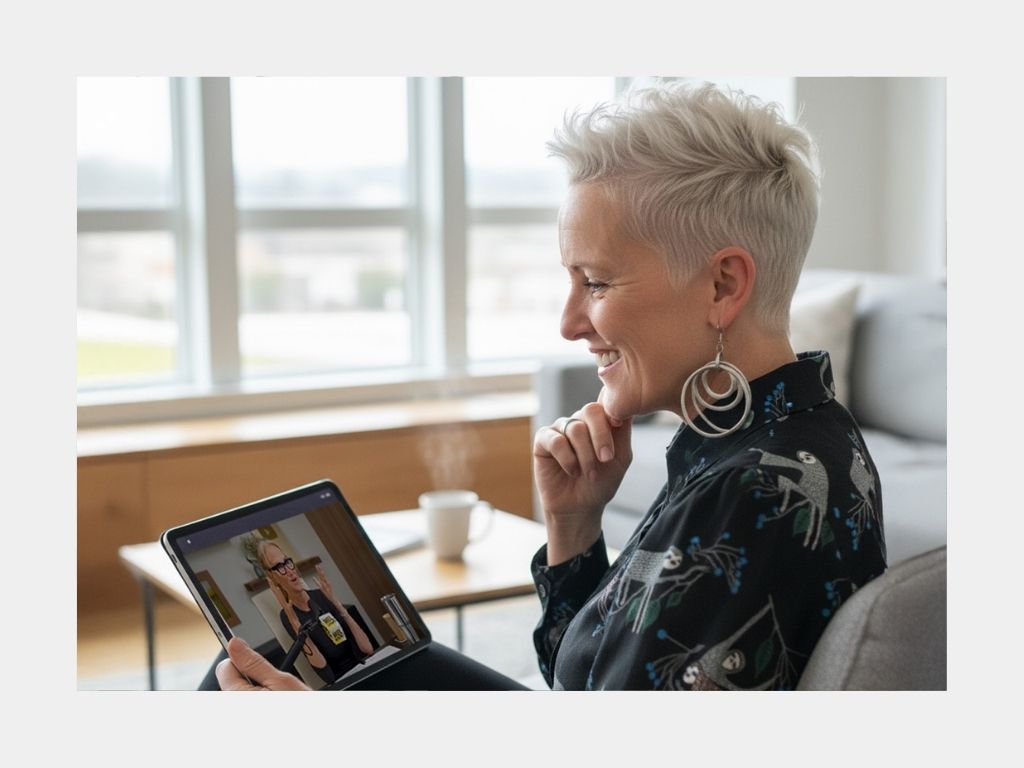Once upon a time, flexible work was seen as a perk - a sweetener to lure in top talent or a hard earned reward for long-term loyalty or seniority. Fast forward to 2025, and it’s not just a bonus anymore. It’s a baseline expectation. Across industries and across generations, Australian workers are rethinking what they want from work and how they can achieve life balance and flexibility is at the top of the list.
Always in the mix was work from home but until Covid hit, it was somewhat limited in practice. But as we all know, the global pandemic changed EVERYTHING and a significant number of employees are now wanting, and expecting, a hybrid work offering where possible.
What if your business can’t offer work-from-home, what can you do? Let’s take a look at why flexibility matters, how expectations vary between age groups, and the creative ways employers are making it work - even when working remotely isn’t an option.
What do we mean by flexible work?
Let’s clear something up: flexible work does NOT mean working in your pyjamas on a laptop in bed.
Flexible work simply means giving people some choice over how, when or where they do their work. That could mean a range of options such as:
- Adjusted start and finish times
- Compressed workweeks (e.g. four 10-hour days)
- School-hours scheduling
- Part-time or job share options
- Flexible rosters
- Make-up time for personal or family commitments
It’s about acknowledging and understanding that people have lives and pressures outside of the workplace and allowing them enough autonomy to manage the personal while still delivering on the professional.
Why flexibility matters more than ever
1. Post-covid expectations haven’t gone away
Even for industries that returned to on-site work long ago (like manufacturing, hospitality, or retail), the shift in mindset remains. People experienced a taste of balance, and they’re reluctant to go back to rigid, 9–5 models without reason.
2. The talent market is still competitive
While we’re no longer in the “great resignation” frenzy of 2022, talent shortages persist in many sectors. Flexible employers are still winning the recruitment race especially in regional areas or niche roles.
3. Retention and engagement are at stake
Flexibility is now a key driver of job satisfaction. Employees who feel trusted and supported to balance work and life are more likely to stay, and more likely to give their best.
Flexibility can look different across generations
Here’s where it gets interesting. Generational differences are more than just a defined period of time. They are distinct characteristics that transpire among the groups due to the shared experiences that are specific to their time.
Different generations value flexibility for different reasons, and that nuance matters.
Gen Z - 1997-2010
- Highly values freedom and autonomy
- Often seek purpose and mental health support as part of the package
- Will leave jobs quickly if flexibility isn’t part of the deal
For Gen Z, offering flexibility in how work is structured (e.g. varied hours, project-based roles), and involving them in shaping new ways of working will increase engagement and motivation.
Millennials (or Gen Y) – 1981-1996
- Balancing careers, young kids, mortgages, and burnout
- Need family-friendly options and mental space to juggle it all
- Often request part-time, hybrid, or flexible school hours
To engage your Millennials, provide transparency and predictability – like most of us, they need to plan life around work and childcare.
Gen X - 1965 – 1980
- Also now referred to as the Sandwich generation as many are trying to manage life while balancing between teenage kids and ageing parents
- Looking for work-life sustainability and respectful leadership
- May value time over money as priorities shift
X-Tip: Don’t assume they’re too “senior” to want change. They’re often the quiet early adopters of better work models.
Baby Boomers – 1946-1964
- Many are starting to scale back or semi-retiring
- Others still want purpose, contribution and structure
- Often open to reduced hours or mentoring roles
Flexibility for Boomers may mean reduced days or the ability to ease out of work – check here for more info around using long service leave to support this option.
What if working from home isn’t an option?
Flexible work isn’t limited to approving work from home. Plenty of businesses that can’t offer WFH options are still thriving by giving people more choice and control over how they work with options such as:
- Roster input – Let people submit preferences or swap shifts more easily
- Split shifts or adjusted start/end times – Great for early risers or school pickups
- Longer shifts + shorter weeks – Four-day workweeks are a hit where possible
- Extra leave – The ability to purchase additional leave, loyalty days, birthday leave or lifestyle days can make a big impact
- Job sharing – Especially useful in admin or customer service roles
- Sabbaticals - Allowing employees to take 6-12 months unpaid leave to pursue study goals knowing their role will be there at the end for them to resume.
The business case: why it makes business sense
This isn’t about pandering to the whims of employees. Lifestyles have changed and technology has advanced considerably – is there anyone else who remembers having a telex in the office (before we got a fax)….? For sure, there’s a human side to all of this as life places significant demands on us all as we try to manage families, aging parents, personal health matters and so on. But, putting the business hat on, the commercial benefits of flexible work are real, too:
- Reduced absenteeism – People can work around life instead of calling in sick
- Improved productivity – Flexibility often leads to better focus and performance
- Lower turnover – People stay longer when they feel supported
- Better employer branding – “Flexible work” is one of the most searched terms on job boards
- Increased diversity – Especially for parents, carers, older workers and neurodivergent team members
Boundaries need to be clear
Boundaries for both the employer and the employee should be clear. Flexibility should never mean being “always on” or feeling guilty for stepping away. The key is structure:
- Clear expectations around hours and availability
- Documented policies and team norms
- Regular check-ins (not micromanagement)
- A culture that supports flexibility — not just a policy that says it exists.
Flexibility is a benefit and not a right. Yes, it’s important to understand that the demands of life in 2025 and beyond means we are reviewing how businesses can operate effectively and efficiently while offering alternative working structures that better support our employees needs. However, if it’s not working for your business, or you have team members abusing the opportunity, then flexibility can be taken off the table.
It’s best practice to have clear, well-communicated policies around flexible work. While different arrangements will suit different employees, it’s essential that your approach is applied fairly and consistently across the team.
It’s absolutely reasonable to set limits — for example, it may not be appropriate to approve unsupervised hours for a new hire or someone who’s currently underperforming, especially if they need coaching or support. But flexibility shouldn’t be used as a reward or withheld as punishment.
The key is to set clear guidelines on who can request flexible work, what options are available, and under what circumstances they may be declined. Transparency and consistency will help build trust and reduce confusion.
The legal stuff
Of course, there is also the legal consideration in which the ability to request flexible working arrangements is contained within the Fair Work Act. Certain eligible employees have the right to request flexible working arrangements. Employers have the right to decline requests, but these must be on reasonable business grounds and there are processes that must be adhered to that you can read here.
So, what next?
If you’re a business leader, now’s the time to reconsider workplace flexibility as a strategic benefit and not simply a favour. Even small changes can have a big impact on morale, engagement and retention that in turn benefit productivity.
Don’t worry if your team can’t work remotely. The most powerful kind of flexibility is the kind that matches both your employee’s needs and your business – it needs to be a balanced approach that meets the needs of both parties.
Need help designing practical, people-friendly flexibility in your business? Contact HR Staff n’ Stuff now and we’ll help you make it work.







